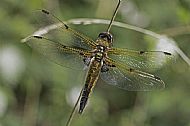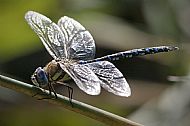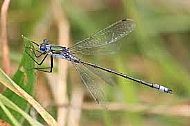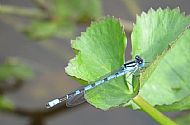Dragonflies and damselflies
Dragons and damsels are amongs the most attractive of flying insects, as well as being good indicators of a healthy water environment.
Status
Like many other species groups there are changes in distribution going on with species moving north as the climate shifts. Changes in wetland habitats, both natural and artificial are also causing changes in populations.
Local Species
There are only 10 species in Renfrewshire so it is not a difficult group to learn.
The Variable Damselfly (Coenagrion pulchellum) has spread northwards and is now recorded only a few miles away in Ayrshire. It is expected to be found around the Lochwinnoch area very soon. It is quite similar to the Common Blue and so will need careful identification.
Dragonflies
Golden-ringed Dragonfly (Cordulegaster boltonii) - found in moorland areas by quick flowing streams. Fast and often noticed because of wing noise.
Common Hawker (Aeshna juncea) - frequent in larger waterbodies. The only Hawker we have in Renfrewshire.
Four-Spotted Chaser (Libellula quadrimaculata) - quite a common species locally, on larger waterbodies.
Common Darter (Sympetrum striolatum) - more common, found in medium sized waterbodies.
Black Darter (Sympetrum danae) - frequent.
Damselflies
Blue-tailed Damselfly (Ischnura elegans) - quite common, often the most tolerant of poor water conditions.
Common Blue Damselfly (Enellagma cyathigerum) - common in all kinds of ponds.
Azure Damselfly (Coenagrion puella) - common.
Emerald Damselfly (Lestes sponsa) - widespread but not common.
Large Red Damselfly (Pyrrhosoma nymphula) - common, the only reddish species to be seen here.
Identification and recording
There are several guides on odonata, two useful ones are: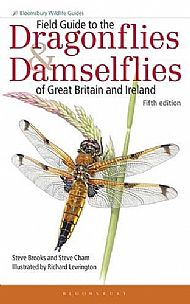
Britain's Dragonflies: A Field Guide to the Damselflies and Dragonflies of Great Britain and Ireland, by Dave Smallshire.
Field Guide to the Dragonflies and Damselflies of Great Britain and Ireland, by Steve Brooks and Steve Cham.
Approximately £13.00-£20.00 from various sellers.
There is also the Guide to the Dragonflies and Damselflies of Britain, a Field Studies Council fold-out guide for around £4.
Once people are confident with their identifications, iRecord is recommended as a convenient way of submitting records. iRecord allows people to see what others have been recording in their local area as well as submitting records to the national species databases.
click on the images below to get a larger picture

